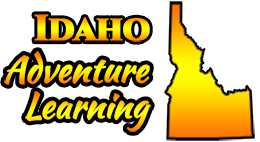Bunker Hill Superfund Site Article
Submitted by cknigge on Tue, 2017-06-20 00:00
I'm originally from southern Idaho, and I'm only 30 years old, so I did not know a lot about Bunker Hill or its effects on local habitat and organisms. I've been reading a fair amount of articles Bunker Hill over the past couple of summers and incorporated this reading into my biology classes at Timberlake High School. I feel that it's important for my students to know what happened basically in their own backyard, so we can learn from mistakes. Some of them get excited about ecological conservation, while others give the teenager "who cares" response. Even though that can be very frustrating for me, as educators if we can get some of them to see the importance, then I know my teaching skills are not thrown on the wayside.
I've attached a great summative article of Bunker Hill that was done last summer through Newsweek that some of you may have already read.

Comments
The Affect on the Air
Thank you for sharing the article with us. Today, out in the field, we visited areas that had high levels of lead contamination. One of the observations I made was the smell in the air and how powerful it remains in the area. This is one of the first things noted in the article you shared.
When you drive up to Wallace, you don't realize how much contamination is still in the soil nor how big the clean up project is.
I like to share through pictures so I will attach some for your viewing.
Bunker Hill Superfund Site Article
Cameron, I read the Newsweek article about Bunker Hill. Although I knew there was pollution from Silver Valley mines still affecting the ecosystem, I was unaware of the extent to which the problem persists. As educators we need to be deliberate in our efforts to inform students of the history of Idaho's superfund sites and what is involved in rehabiliating ecosystems from such disasters.